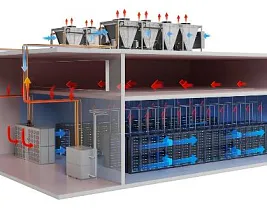Researchers at UBC Okanagan are addressing indoor air quality in a novel way with their Aerosol Removing Tapestry (ART) project. ART, developed by the university’s Airborne Disease Transmission Cluster, aims to provide a practical solution for filtering harmful airborne particles such as viruses, bacteria, pollen, and pollution, all of which can pose serious health risks.
The ART system uses positively charged filters, created in collaboration with community partner C-Polar Technologies, which are hidden behind an artistic fabric that resembles a painting. This low-cost, quiet, wall-mounted solution offers a more discreet and customizable alternative to traditional filtration systems, which are often noisy and bulky.
The research team, led by Dr. Jonathan Little and Dr. Sunny Li, has evaluated high-risk areas for viral transmission at the university, using data on CO2 levels to determine where ART can have the greatest impact. Their goal is to test the effectiveness of ART in improving air quality in different indoor environments, from university campuses to hospitals.
As indoor and outdoor air pollution remains a global concern—linked to nearly seven million deaths annually—this project addresses a critical issue. With 99% of the global population breathing air that exceeds World Health Organization (WHO) pollution guidelines, solutions like ART are more relevant than ever.
The interdisciplinary nature of the research, which brings together experts in medicine, engineering, health sciences, and industry partners like C-Polar Technologies and Interior Health, reflects UBC Okanagan’s collaborative approach. Supported by the university’s Campus as a Living Lab initiative, the project bridges the gap between theoretical research and practical application, with the potential to offer global solutions for improving air quality in indoor spaces.
The researchers believe that, while concerns about COVID-19 have heightened awareness of air quality, other ongoing issues such as wildfire smoke and vehicle emissions make the need for improved indoor airflow an ongoing priority.





